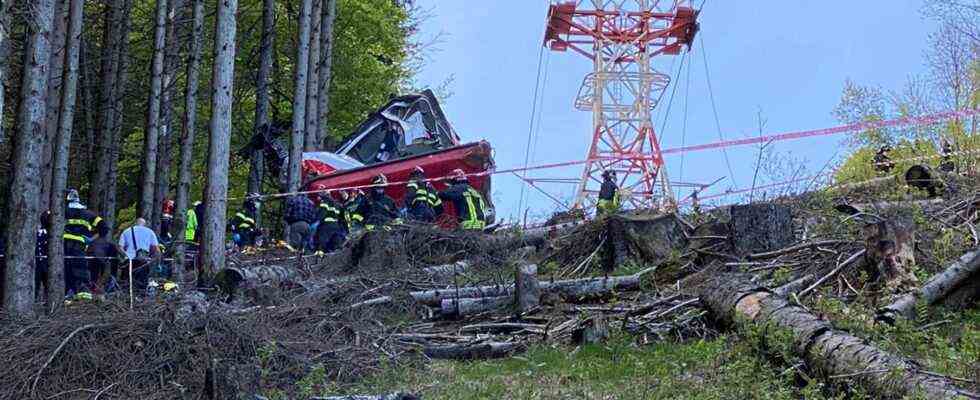Status: 23.11.2021 6:19 p.m.
It’s been six months since a cable car crashed in Stresa, Italy. 14 people died. The investigation of the cause of the accident is difficult – and not only for technical reasons.
The gray clouds hang low over Stresa, it is drizzling and the water of Lake Maggiore looks like liquid lead. On this gray November day, Mario Zangobbi is sitting in the “Imbarcadero” bar at the ferry terminal, sipping his espresso. Like almost everyone in Stresa, says the restaurateur, he still clearly remembers the day half a year ago when the sun was shining over Lake Maggiore, spring was in the air and the destination was full of tourists.
“I heard the sirens that Sunday lunchtime. But I thought maybe a car accident,” recalls Zangobbi. But then his wife told him that the cable car had crashed. “I turned on the TV and got goose bumps when I saw the pictures.” He couldn’t believe it: “How can it be that the cable car crashes?”
Laborious reconstruction
Olimpia Bossi has been looking for an answer to this question for six months. The responsible public prosecutor took over the investigation immediately after the accident. Bossi is now sitting in her office in the Verbania court between a mountain of files and reconstructing what happened on May 23 at around 11:45 a.m., shortly before one of the cable car gondolas with 15 people on board could reach the Mottarone mountain station.
“The cab’s pull cord broke, that’s clear,” says the prosecutor. In this case, an emergency braking system would have to be activated and stop the car. “But,” says Bossi, “it was blocked because there were metal clips in the brake system that are only allowed to be there when the cabin is not in operation or during maintenance work.” Because the emergency braking system did not work, the cabin raced downhill, hit a support pillar and crashed. 14 people died.
Public prosecutor assumes manipulation
Why the brakes were locked is one of the central questions Bossi is investigating. The prosecutor is convinced after months of investigations: It was a knowledgeable manipulation: “It was a decision that was made consciously System to avoid. “
Specifically: During normal operation, the cable car occasionally stopped unintentionally. To prevent this, the emergency braking system was switched off. A manipulation, says the public prosecutor, which not only occurred on the day of the accident, but several times in the weeks before.
The operations manager is currently under house arrest, but he says he did not act of his own volition. In this connection, the public prosecutor is investigating the technical director and the owner of the cable car. The owner does not respond to press inquiries.
Why did the rope break?
Bossi shrugs his shoulders on the second major point of their investigation. As for the question: Why did the pulling rope break, so why did an emergency arise in which the braking system should have been activated? “Today we are not yet in a position to give an answer,” admits the investigator.
As part of the investigations, a pool of experts is currently carrying out extensive technical analyzes of evidence. The goal is to “understand the reason why the rope broke”.
It was not until the beginning of November that the crashed gondola could be recovered in Stresa and taken away for examination.
Image: REUTERS
Complicated salvage of the cabin
One of the most important pieces of evidence is the cable car cabin, which was only recovered earlier this month. According to the prosecutor, the fire brigade had to cut about 80 trees at the crash site, secure the almost one and a half ton cabin and transport it away with a special helicopter.
Specifically, the question of the rope break is being investigated against a total of eleven people, including those responsible at the company that carried out the annual inspections of the cable car. A first hearing of the experts who are now examining the nacelle is planned for December 16. The trial is unlikely to start until next spring.
Mario Zangobbi in the bar on the jetty in Stresa wants to be cleared up as soon as possible. The misfortune, he says, still weighs on the collective memory of the 5,000-inhabitant town. “We don’t talk about it much here. It’s almost as if we all feel a little guilty,” he said. That is of course nonsense, but “we are also concerned with the question of who is really responsible for this disaster”.
Six months after the cable car accident: One confession and many unanswered questions
Jörg Seisselberg, ARD Rome, 11/23/2021 5:52 p.m.

